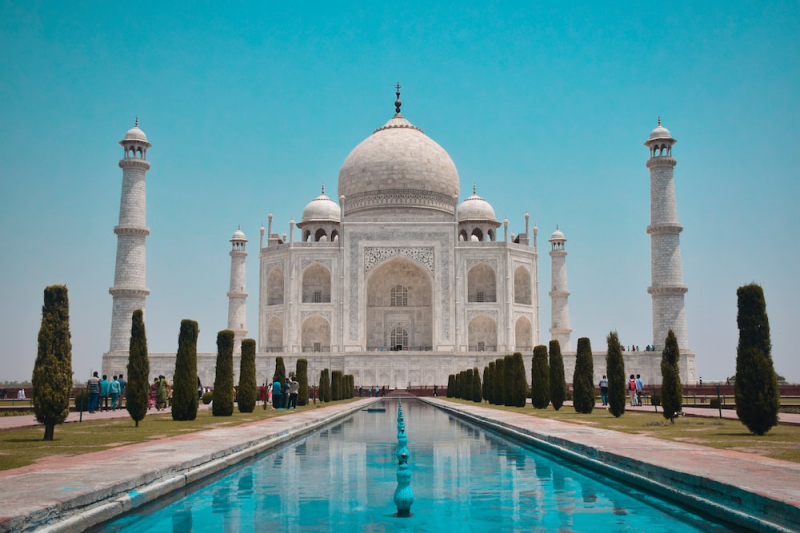Taj Mahal

The Taj Mahal is an Islamic ivory-white marble mausoleum by the Yamura river in Agra, India. It was constructed by the Mughal Emperor Shah Jahān (reigned 1628 - 1658) to honor his wife Mumtāz Maḥal who died in 1631 while giving birth to their 14th child. It also houses the tomb of Shah Jahan himself. The tomb is the centerpiece of a 17-hectare (42-acre) complex and was essentially completed in 1643, but work continued on other phases of the project for another 10 years. The Taj Mahal complex is believed to have been completed in its entirety in 1653 at a cost estimated at the time to be around ₹32 million, which in 2020 would be approximately about US $1 billion.
It is believed that the project Taj Mahal was made possible by 20,000 artisans under the guidance of a board of architects who were experts at that time. Therefore, this place is known for reflecting the beauty of nature and divinity through breathtakingly beautiful architecture and design. The Taj Mahal incorporates and expands on design traditions of Indo-Islamic and earlier Mughal architecture. Specific inspiration came from successful Timurid and Mughal buildings. While earlier Mughal buildings were primarily constructed of red sandstone, Shah Jahan promoted the use of white marble inlaid with semi-precious stones. Buildings under his patronage reached new levels of refinement in all parts of the Taj Mahal, including Tomb, Exterior decorations, Interior decoration, Garden, and Outlying buildings.
The Taj Mahal also has several myths, though none of which are supported by the archaeological record, have appeared asserting that people other than Shah Jahan and the original architects were responsible for the construction of the Taj Mahal. For instance, in 2000, Purushottam Nagesh Oak - an Indian historical negationist launched a petition to declare that a Hindu king built the Taj Mahal. In 2005, a social worker and preacher named Amar Nath Mishra claimed that the Taj Mahal was built by the Hindu King Parmal Dev in 1196. Another such unsupported theory is that the Taj Mahal was designed by an Italian, Geronimo Vereneo, or that a Frenchman, Austin of Bordeaux designed the Taj.
Despite all those myths and rumors, the Taj Mahal was loved by many, and designated as a UNESCO World Heritage Site for being "the jewel of Muslim art in India and one of the universally admired masterpieces of the world's heritage".
Official name: Taj mahal, or Tadj Mahall
Situated in: India
Built in: Around 1632 - 1653
Built by: Emperor Shah Jahān
Designated by UNESCO: 1983







